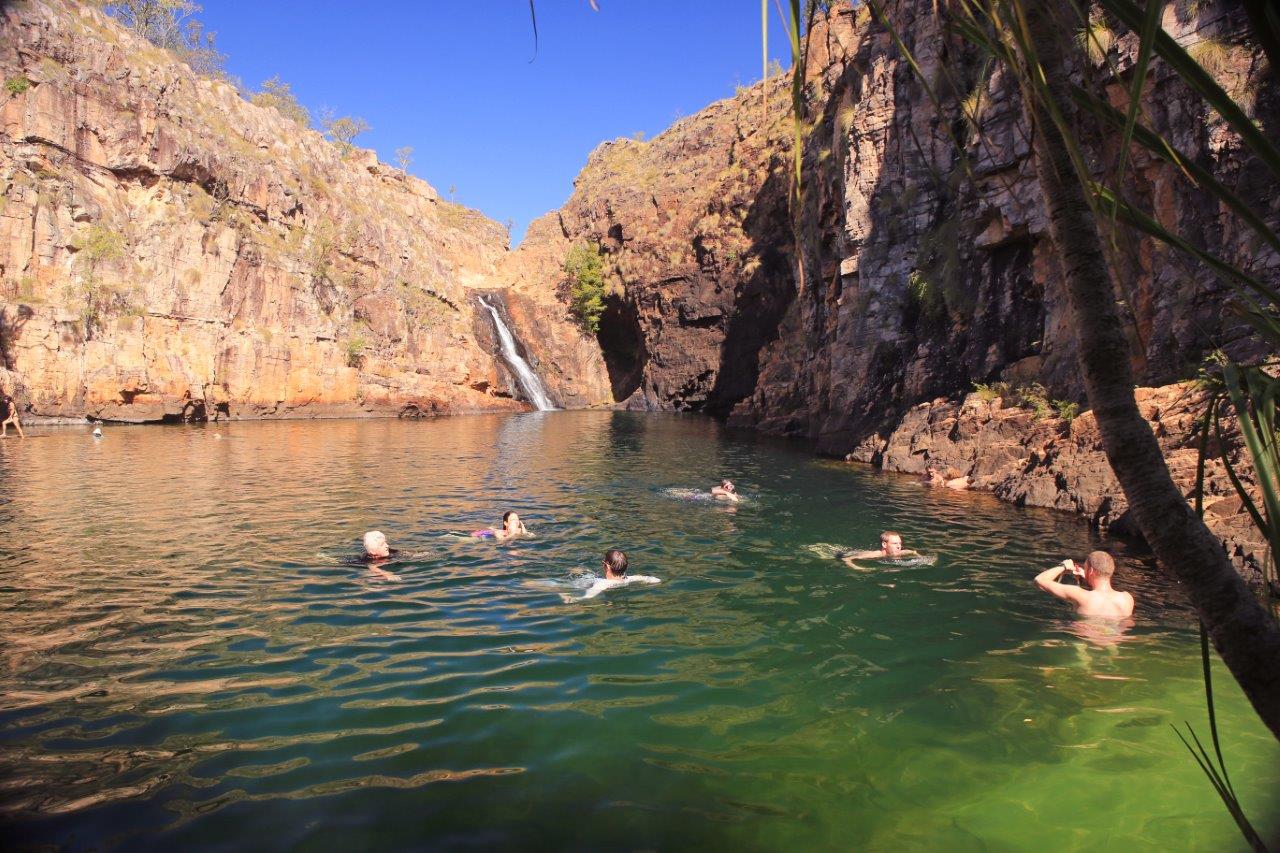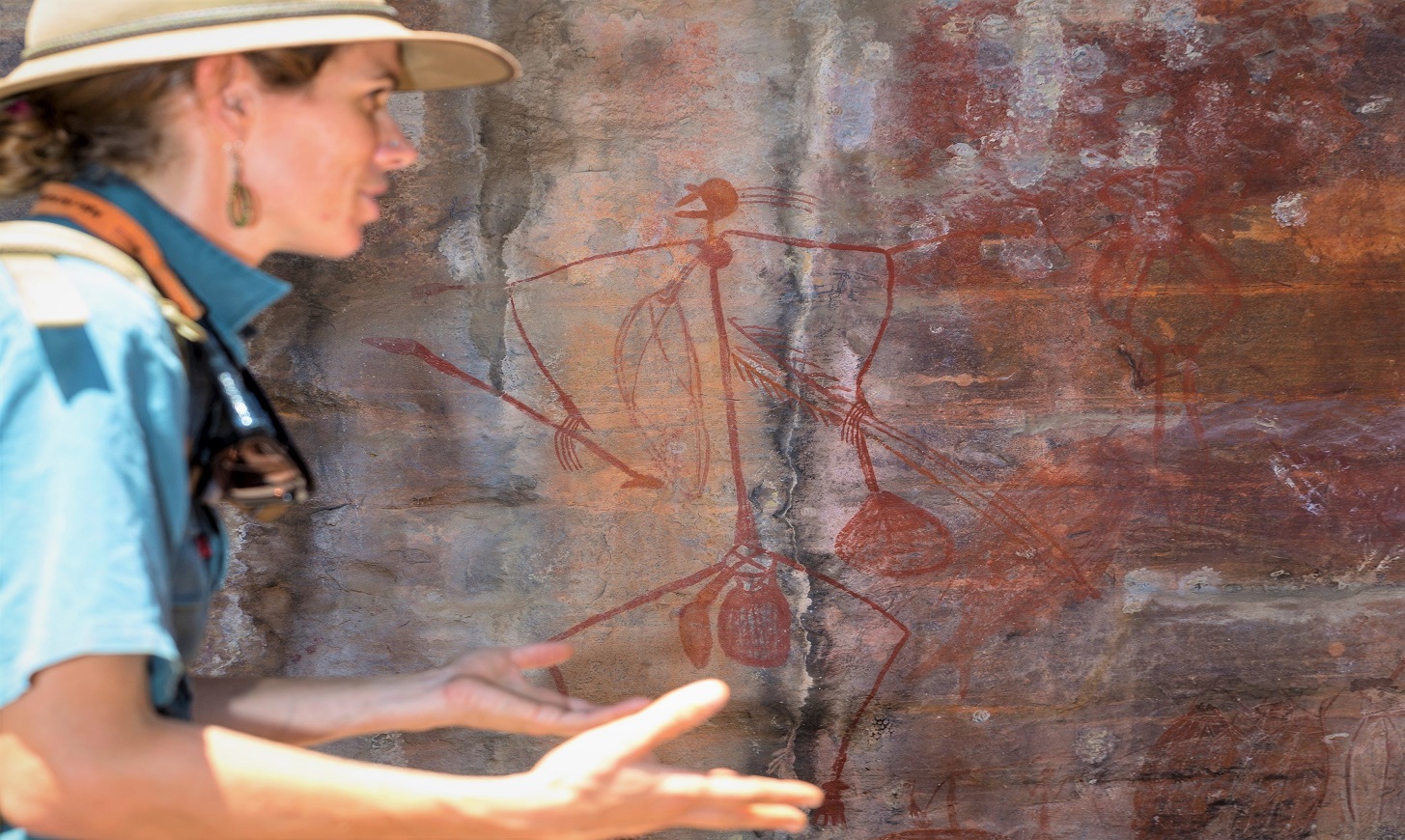When is the best time to visit Kakadu National Park?
Posted on 24 July, 2019 in Kakadu, Tours, Wet Season, Top End Locations
What time of year is the best to visit Kakadu National Park?
The timing of your Kakadu National Park tour will have a massive impact on what you see and experience in Australia’s largest National Park, where the landscapes are entirely dictated by the seasons. To non-Aboriginal people, there are two main seasons in the Northern Territory’s Top End region, where Kakadu is located: the wet and the dry. Not a fan of the heat? The dry is probably the best time of the year to head to Kakadu for you. Prefer solitude? Travel to Kakadu in the wet and it’ll feel like you have this grand expanse all to yourself. Although we think any time is a great time to visit the park, we’ve weighed up the pros and cons of each season for you below to help you plan your trip to Kakadu.

Wet season: November - March
Average max: 34. Average minimum: 24
Pros:
- Rivers and billabongs are full to the brim and waterfalls are at their most spectacular
- The park’s flora is lush, which means the animals are out and about for grazing
- A tropical lightning storm is an experience in itself
- Lovers of solitude will rejoice at the lower visitor numbers.
Cons:
- It’s hotter and more humid than the dry, and the weather can be unpredictable
- Popular attractions such as Ubirr, Gunlom and Jim Jim and Twin Falls, close for the wet.

Peak Dry season: June - August
Average max: 32. Average minimum: 19
Pros:
- Most roads and attractions are open, including ancient rock art site, Ubirr and the awe-inspiring Jim Jim Falls
- The weather is gorgeous (and predictable); perfect for outdoor adventures
- Prime time for croc spotting, as these cold-blooded beasts sun themselves when temps drop.
Cons:
- The combo of great weather and winter school holidays means you can expect big crowds
- The plants haven’t had a drink in months, so the colours aren’t as bright
- You’ll have to get in quick before flights, accommodation and tours book out – and expect to pay premium prices.

Shoulder Season (early & late dry season); April - May and September - October
Temperatures range between wet & dry season averages.
Pros:
- Less tourists mean you’ll get you pick of sun-baking and camping spots
- Prices are lower
- The weather is still fairly predictable
- During the late wet (April – May) the waterfalls are pounding, making this the best time of the year to take a scenic flight
- During the late dry (September – October) the wildlife spotting opportunities are incredible, as billabongs shrink and animals congregate at permanent waterholes
- Barra fishing is at its best during the run-off (March-April)
Cons:
- Depending on the previous wet season’s rainfall, some attractions may still be closed
- It can be uncomfortably hot and humid (especially in October)
Undecided on the time of year that’s best for you to visit Kakadu? Check out our Kakadu tours from Darwin or combine your time in Kakadu with visits to Arnhem Land and Cobourg Peninsula during our five-day tour.
© 2014 Venture North | ABN: 34 142 533 113 | Privacy Policy | Terms & Conditions
Darwin Web Design by Dash Media


